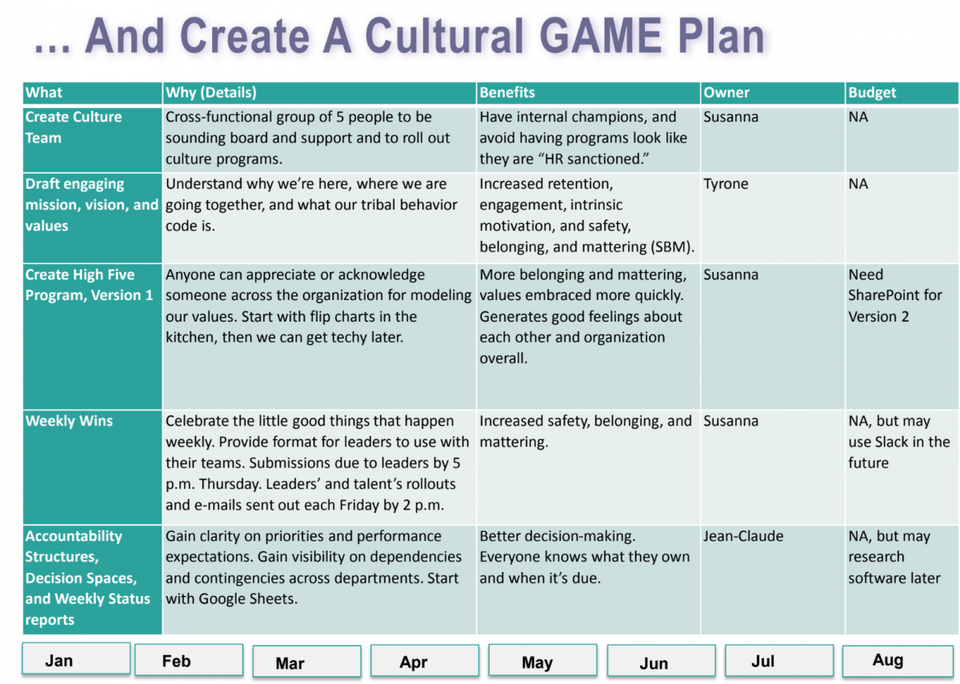
*As originally seen on Forbes.com
There’s a lot of buzz about employee engagement these days. But the sad truth is that engagement stats worldwide are still dreadfully low. And to throw some fuel on the fire, myths about what actually creates engagement are rampant—and are making the problem worse.
Here’s what I know for sure is true, from the 1,000+ organizations I’ve helped to boost employee engagement over the past 30+ years. There are three (if not more!) prevalent myths I come across constantly—and it’s time to bust them.

Myth #1: Employees Are Professionals—They Aren’t Supposed To Be Emotional At Work, And We Don’t Have To Accommodate Their Emotional State.
Myth Busted: Whoa. Based on data from Hoffman Institute, UCLA, and countless other organizations, more than 90% of our decisions and behaviors are driven–are dominated–by our emotional brain. Our intellect, which many employers think rules the day, is only responsible for about 10% of our behaviors. Respecting, understanding and navigating the emotional experience of your team should never, ever, be trivialized.
I’ve found that there’s actually a recipe for emotional engagement the in brain:
Oxytocin: the key bonding hormone, this helps us feel connected to others, loved, seen, acknowledged. It then contributes to the release of…
Seratonin: a neurotransmitter that helps us feel good. When we feel good we choose behaviors that keep us feeling good, like collaborating, being accountable, innovating, and this contributes to the release of…
Dopamine: a neurotransmitter that contributes to reward-motivated behaviors. So we do more of what we think will bring us rewards within our tribe.
What does this mean? That how our team feels matters. That emotions at work are crucial to consider. That as leaders we must intentionally work on creating the conditions to activate the recipe above in the brains of our awesome team. Myth buster #2 will help you do this.
Myth #2: Employee Engagement Surveys Are Effective Because They Show You Care
Myth Busted: A survey is a demoralizing waste of time, energy, and money if you don’t do it right. In my 30+ years as a leadership and culture coach, as well as entrepreneur building and selling 5 businesses and investing in more than 200, I’ve seen a LOT of employee engagement surveys.
Per Bruce Temkin of the Temkin Group (see my prior blog on the link between Customer Experience and Employee Engagement citing his research) a super smart analytics guru, there are 3 types of analytics you want to ensure you get:
Descriptive: this is where you learn the state of the world.
Predictive: this is where you understand how the state of the world will remain the same.
Prescriptive: this is what most leaders miss—that the employee engagement survey, if done properly, can be a prescriptive tool to show you what you need to change and how.
Here’s an example of the descriptive and predictive. First, you’ll see the survey, then an excerpt of the comments:

Safety, Belonging, and Mattering Heat Map Sample

From the above, we understand the state of the world—and it will continue unless we take decisive and effective action to change it—that’s the prescriptive work. Here’s an excerpt of the Cultural GAME (Growth, Appreciation, Measurement, Engagement) Plan we created to shift the cultural challenges we learned about from our client in the SBM Index Employee Engagement Survey above.

And here are the results that occurred within the first 7 months as the prescriptive work was put in place:
- Safety increased: 15%
- Belonging increased: 22%
- Mattering increased: 17%
And the client reported that:
- Leaders were now aligned around clear needle movers (goals and accountability structures) and simpler ways to get greater results.
- Teams were building processes that were propelling all teams’ effectiveness to new levels.
- They now were able to enroll, engage, align our team to optimize performance.
- They now get more done in less time, are more motivated, are all speaking the same language, and all continue to collectively raise the bar.
- They’re more accountable, aligned, and effective than ever before.
Now that’s engagement!
Myth #3: Employees Want More Money To Be More Engaged
Reality: For very few people, and they are contract workers, this is true. But for the vast majority of employees out there the meaning in their work matters far more, the depth of their connections to your organization’s cause, to their colleagues, to your clients is what will move them more. We all want to be part of something bigger than us, something that really makes a difference , removes pain, solves a problem, something we’re proud of. All workers should insist on this and not settle for less. All employers should strive to create this and not chicken out.
The Net-Net
- Understanding the emotional experience of your team is essential—then you must navigate it
- Prescriptive must be added to the first 2 types of analysis (descriptive and predictive) is we’re going to create change
- Make sure your workplace, and work overall, creates the experience of meaning—we all need to know we’re part of something bigger than us that matters
What other employee engagement myths do you come across? Let’s bust them together!







